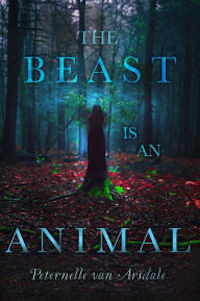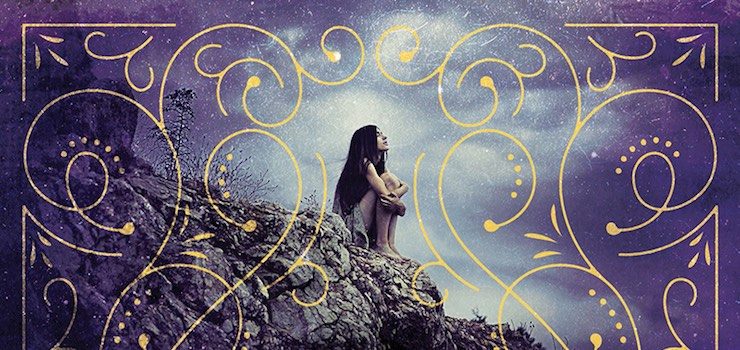You might’ve heard that this month was the 20th anniversary of Buffy the Vampire Slayer’s television debut As a result, I’ve had Buffy, and her famous intro, on the mind even more than usual—particularly the part that says, “She alone will stand against the vampires, the demons, and the forces of darkness.” It’s been the driving force of many a story since then: the lone young woman, the only one who can save us all.
But what if that young woman controls the forces of darkness?
Twin girls, raised in the woods by a mother whose husband cast her out for witchcraft, grow to be something other than just children. A girl in a land full of various magics discovers her own when she raises her brother from the dead. A child who encounters a hated and feared Beast finds that she has a connection with it. These young women all have something in common with Buffy: her power originally came from darkness, too. In The Bone Witch and The Beast Is an Animal, that connection—the strength of the dark, what its power can do, where it leads—is at the forefront.
Peternelle van Arsdale’s The Beast Is an Animal starts with twin girls, Benedicta and Angelica, raised in the woods far from what passes for civilization in their world. After their mother dies, these wild girls grow into a strange power… until one night they come out of the woods. Only children survive their visit to the village of Gwenith, and only young Alys, roaming the fields during a sleepless night, sees the twin soul eaters as they float out of the fforest (the Welsh-affected spelling is a slight distraction).
 Van Arsdale’s novel has the pace and spareness of a fable. The world consists of a few towns, of varying degrees of open-mindedness; the structure within Defaid, the town where the orphaned children wind up, is gendered and forcefully traditional. The women do laundry; the men lead. A strict morality dictates what they do and how they do it, and van Arsdale writes the judgmental, harsh adults with a flatness that underscores the bland but frightful control of their leaders. Don’t ask questions. Power comes from above. One mustn’t challenge the Elders. Disobey, and the Beast will get you. And if something terrible happens to you, you probably deserved it.
Van Arsdale’s novel has the pace and spareness of a fable. The world consists of a few towns, of varying degrees of open-mindedness; the structure within Defaid, the town where the orphaned children wind up, is gendered and forcefully traditional. The women do laundry; the men lead. A strict morality dictates what they do and how they do it, and van Arsdale writes the judgmental, harsh adults with a flatness that underscores the bland but frightful control of their leaders. Don’t ask questions. Power comes from above. One mustn’t challenge the Elders. Disobey, and the Beast will get you. And if something terrible happens to you, you probably deserved it.
The Beast of the title is a cautionary tale, the subject of nursery rhymes sung by brave children, but to Alys it’s something else—something she’s met in the forest. Something that speaks to and heals her. To the villagers, it’s the cause of all problems, a devil in league with the soul eaters. What it is is far less simple or clear: a force of nature, a guiding power, something feared and misunderstood. As Alys grows, and the villagers demand more and more from the children they’ve taken in, the Beast stands for freedom, difference, change. And it wants something from Alys, who is more like those bitter twins than she realizes.
Van Arsdale walks a careful line with her novel’s tone—too much detail or specificity would distract from the mythic feel; too little, and the whole effort goes a little too opaque, the point obscured by atmosphere. What works best in this debut is the light hand with which van Arsdale knits together connections between gender and power, fear and knowledge. These things link Alys, her foster mother, the twins, and the Beast: it’s unclear, and rightly so, why the twins become killers when Alys might save everyone. That’s how the world works; everyone’s response to trauma—or power—is different. In the end, though, that same light hand, in its refusal to pin down the details, makes the climax too dreamy and loose.
Alys’s world is in many ways Nowhereland, a fantasy world built of small towns and small minds, the Beast its main identifying detail. At the opposite end of the worldbuilding spectrum is Rin Chupeco’s The Bone Witch, a lush, Asian-influenced fantasy that’s as vivid and precise as van Arsdale’s world is mythic and streamlined.
“I never intended to raise my brother from the grave,” says Tea, the titular bone witch. At a young age, Tea discovers—through this dead-raising—that her magic is a rare kind. Magic is common enough—her sisters have their own kinds—but Dark asha, as they’re called, are rare, both prized and feared for the power they wield over death. Tea’s discovery of her talent leads an older Dark asha (bone witch is the insulting name for them) to take her far from her small-town home, to an apprenticeship that puts her in the orbit of her world’s rulers.
 The Bone Witch is about 67% setup and worldbuilding, backstory and education, which isn’t for everyone—but Chupeco does a marvelous job with the vibrant details of her premise, using Tea’s education to illustrate how women with power move through her fictional world. Where Alys fears her own power, and is safer off keeping it hidden, Dark asha undergo a long education that serves, essentially, to both instruct and tame them, to make them palatable to a world that distrusts them. They learn pretty arts, dancing, self-defense, politics; they are trained to be interesting, intriguing, delightful women who sell their company to rich leaders and the like.
The Bone Witch is about 67% setup and worldbuilding, backstory and education, which isn’t for everyone—but Chupeco does a marvelous job with the vibrant details of her premise, using Tea’s education to illustrate how women with power move through her fictional world. Where Alys fears her own power, and is safer off keeping it hidden, Dark asha undergo a long education that serves, essentially, to both instruct and tame them, to make them palatable to a world that distrusts them. They learn pretty arts, dancing, self-defense, politics; they are trained to be interesting, intriguing, delightful women who sell their company to rich leaders and the like.
They benefit from this training, sure. (And Chupeco’s book is all the stronger for having an excellent supporting cast of teachers, artisans, mentors, and other asha.) But it’s clear that the entire structure of asha training, Dark or not, is to train women with power to use it in appropriate ways. Chupeco lushly details Tea’s world (in which everyone wears their heart around their neck in the form of heartsglass, its flickering colors rendering each heart an open book) and training, from her days as a glorified maid to her slow but steady progress in fighting, magic, and politics. She helps a boy who dreams of being an asha—a career only allowed to women—and banters with a prince who’s caught her eye. If the prince isn’t quite as compelling as Tea, well, it’s understandable; we’re not privy to every detail of his upbringing.
But the other part of the story, and the place where the book begins, takes place on a stark, skull-covered beach, as an older, aching Tea raises daeva (powerful magical beasts that don’t stay dead), and tells her story to a bard she’s lured to her side. (I spent half the book relishing the notion of this young dead-raising witch telling her story to an older, skilled lady bard, but I just missed a cue or two: the bard is male.) This Tea is solitary, practical, and incredibly powerful, and the tension Chupeco creates between the two parts of the girl’s story pushes all the details of her narrative forward. What happens to change clever, studious-but-rebellious, big-hearted Tea into a young woman who wants to destroy things?
It wasn’t until two-thirds of the way through the book that I realized that Tea’s tale was only beginning; no where on the cover does The Bone Witch mention it’s part of a series, and it can stand alone, if you’re fine with a mysterious ending. It’s a different kind of mystery than what happens with Alys, who finds closure—just not closure that’s clear to the reader. In some ways, these two books are like mirror images of each other: rich detail versus palpable atmosphere; training to control your powers versus hiding them from a mistrustful world; quiet, reward-less world-saving versus … whatever it is Tea has planned.
Both books tell stories in which darkness is strength for those who learn to understand it. It’s just a word, a concept, like any other—part of the world, something that fuels and frightens depending on the story told about it. Why should Tea be more feared than asha who control wind or fire? Why should Alys have to hide that she can help people? Chupeco and van Arsdale both dig into the idea that darkness, and the power associated with it, is misunderstood, mistrusted, a thing that gets you labeled as trouble no matter what your intent—but that’s all projected meaning, the sum of our fears.
It’s no coincidence that the people wielding these powers are women, their existence in these fictional worlds carefully fenced off, their powers forbidden or controlled. The Watchers Council tried that on Buffy, too, and like Alys and Tea, she chose a different path—one that changed the world. All three characters take the stories that are meant to shape their lives and rewrite them into something bigger and better, but they have something else in common, too. They’re not afraid of the dark.
Molly Templeton is Tor.com publicity coordinator, and was not kidding in her staff bio, which explains that she can’t go a week without a Buffy reference.










